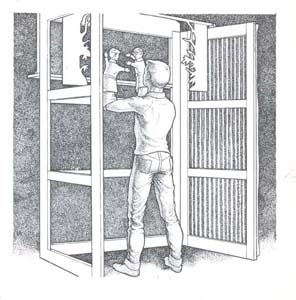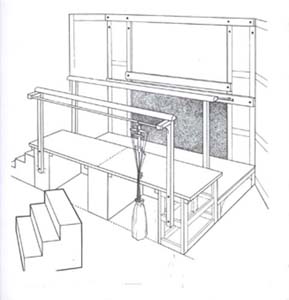GENERAL INFORMATION ABOUT PUPPETS
Stages
Puppeteers generally prefer not tobe seen when operating their puppets, although there are exceptions.Puppeteers who work in night clibs and who work as ventriloquists often are visible to the audience as they perform. In the case of nightclub performers, the spotlight often appears only on the puppet, while the operator "disappears" into the darkness.
Ventriloquists on the other hand are very much a part of the act and so they need to be seen. After all, half the fun is watching to see how skilfully the operator can appear to make the figure (in this case often called "a dummy") appear to speak. The operator's mouth must be fully visible so that the audience can see whether or not the person's mouth rather than the dummies is speaking.
Woody Allen has commented on the bizarre situaltion of Edgar Bergen performing as a ventriloquist on radio!
For many puppeteers though, a stage is needed to complete the illusions of the puppet performance. The stage is usually constructed in such a way that the puppets, and not the operators appear. One glaring exception to this is the Japanese Bunraku theater where hte puppeteers are quite visible on the stage, although they are usually dressed in black with black hoods. After a short while they become invisible to the audience. HOwever, often near the end of the play, the main puppeteer removes the hood which covered the face and i clearly visible to the audience.
The puppet stage reflects the kind of puppet which appears. For hand and finger puppets, rod puppets, shadow puppets and the like, the stage opening is rather high, since the operators are below the the puppets. For marionettes, the operators are above the puppet so the opening tends to be lower.
from Peter Fraser's Introducing Puppetry from Peter Fraser's Introducing Puppetry
Right, a simple stage for puppets
puppets worked from below

Left, a simple marionette stage